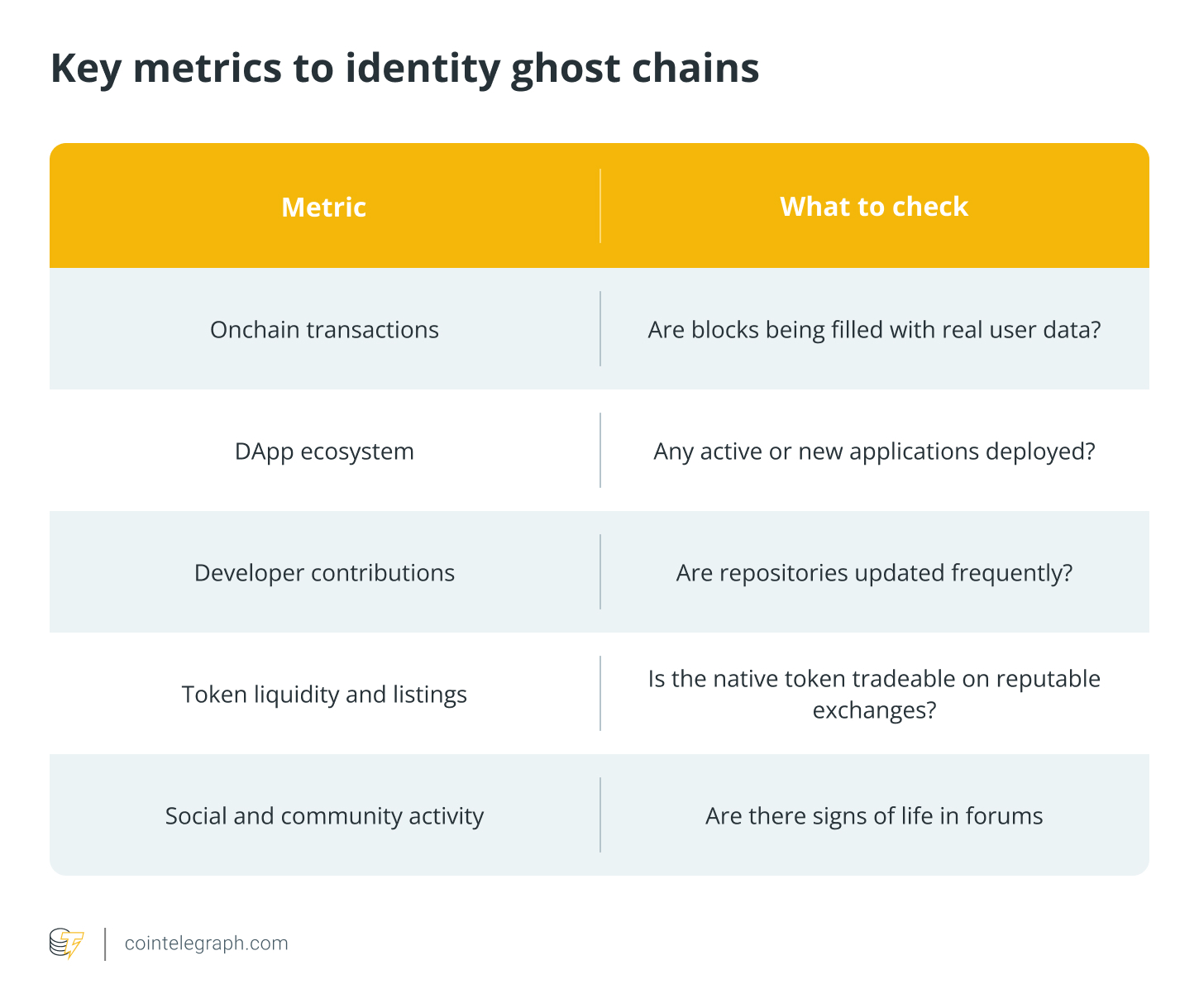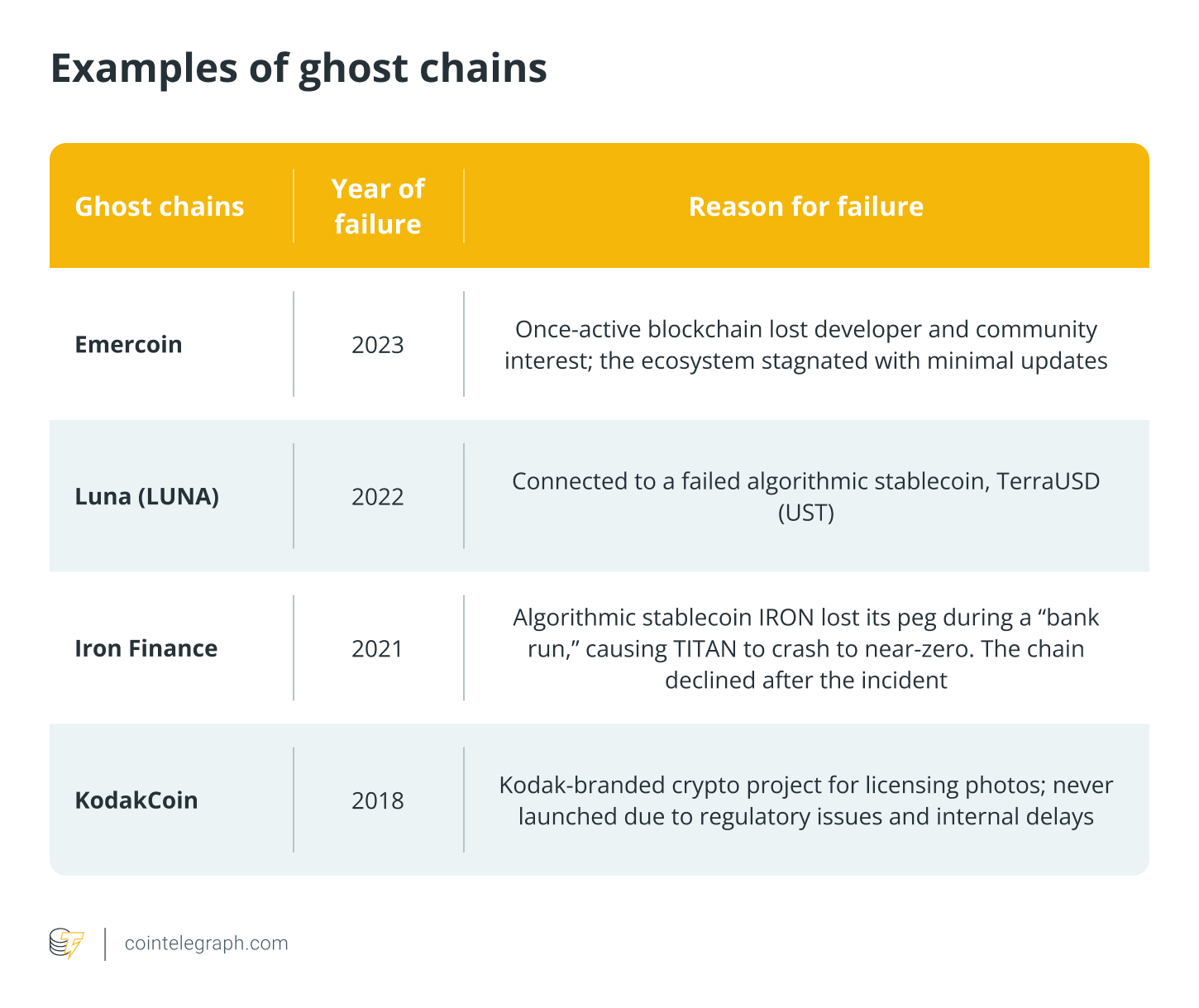Ghost chains are blockchains that are operational but lack real-world usage, developer engagement, and community support, leading to their decline.
-
Ghost chains exhibit diminished developer activity and low transaction volume.
-
Warning signs include inactive communities and exchange delistings.
-
Investors can avoid ghost chains by monitoring on-chain activity and community health.
Discover the hidden risks of ghost chains in cryptocurrency and how to identify them effectively.
| Warning Signs | Indicators | Consequences |
|---|---|---|
| Diminished developer activity | Low code commits | Project stagnation |
What is a Ghost Chain?
A ghost chain is a blockchain that, while technically operational, has been abandoned by its developers and community. These chains show minimal user engagement and transaction volume, often leading to their eventual decline.
What are the Common Traits of Ghost Chains?
Ghost chains exhibit several recurring indicators, such as:
-
Diminished developer activity: Lack of recent code commits or updates.
-
Inactive communities: Minimal engagement on forums and social platforms.
-
Broken or outdated websites: Stale project information and incomplete documentation.
-
Low on-chain transaction volume: Few daily transactions, often automated.
-
Exchange delistings: Native tokens may be delisted or have low liquidity.
How to Investigate and Identify Ghost Chains?
To protect your investments, assess any blockchain before engagement. Here are key questions to consider:

-
Examine transaction data: Use blockchain explorers to check transaction frequency.
-
Check DApp activity: A thriving chain will have active decentralized applications.
-
Assess GitHub updates: Look for recent code commits and bug fixes.
-
Monitor social media: Active communication channels indicate a healthy community.
-
Review token performance: A declining token price can reflect abandonment.
-
Crypto events: Participation in events can signal ongoing development.
Ghost Chain Examples: Projects That Lost Momentum
Several blockchain projects, once praised for innovation, have become ghost chains due to declining usage:

Commonly, these projects fail due to lack of active ecosystems and developer engagement.
Risks and Consequences of Ghost Chains
The stagnation of blockchain networks has broader implications, including:
-
Loss of investor capital due to token devaluation.
-
Wasted development time and resources.
-
Decreased trust in newer blockchain initiatives.
Ghost chains can also pose security risks, as abandoned domains may become phishing traps.
Key Takeaways
-
Ghost chains are operational but lack real-world usage and community support.
-
Warning signs include stagnant developer activity and low transaction volume.
-
Investors should monitor on-chain activity and community health to avoid ghost chains.
Conclusion
Understanding ghost chains is crucial for navigating the cryptocurrency landscape. By recognizing the signs of decline and engaging with active projects, investors can safeguard their resources and make informed decisions.